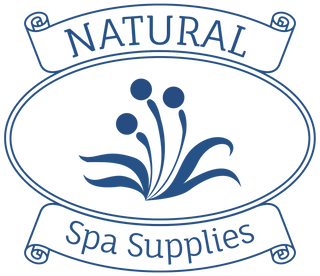Argan Oil long known to the Berbers of Morocco - famed by the Ancient writers for their beauty, is now being hailed in the West as the one of the most remarkable anti-aging oils. Not only is the oil of intrinsic interest for its virtuous properties - the method of production, so tied in with the traditional ecology and economy is worthy of expansion:
Argan Oil is pressed from the seed kernel of the Argan tree (Argania spinosia L.). It is a relic tree species, dating from the Tertiary era, (think Jurassic) growing only in dry forests in Southern Morocco. There, across dry mountain foothills, this tree is found in an area of about 800,000 hectares. The tree was protected first by Moroccan law, and then more recently by UNESCO, as part of our world biosphere heritage, not only because the species is unique, and the deep roots of the Argan tree help to prevent encroachment by the Sahara desert, but also due to its economic and cultural value.
Over the course of its 200 year life, the fruits are collected for producing oil for cooking and as fully natural cosmetic oil for the hair, skin and nails. All parts of the tree are used by humans and mammals as fodder, fuel wood, lighting oil and shelter. Even, finally the roots are used in some way, as are all of the by-products of Argan Oil production. Argan Oil literally permeates the lives of three million mountain Berbers.

An argan tree, heavy with fruit.
It was from the 1980s when Berber claims about the many virtues of Argan Oil began to be substantiated by Western scientists and several rare biological compounds were identified with high therapeutic values. Beside its anti-ageing effect on the skin, the oil was found to contain anti-cancer compounds, and to help acne sufferers. In fact this oil is beneficial for all skin types. Ironically, this was at a time when the Argan Forest had already shrunk by one third in less than one century. The trees are still under threat from increased crop planting, more intensive grazing by livestock and low wood stocks. It is a common sight to see goats high in the limbs of Argan trees, browsing on the leaves and the kernel bearing fruits, or migrating camels snatching mouthfuls of Argan fodder. Despite the damage goats inflict, the villagers used mainly to collect the fruits from the ground after they had passed through the goats insides. However at this time the human population level was just two million, and there were few thoughts of exporting the oil.
Nowadays, due to the increased commercialization of Argan Oil, the trees are better protected from goats and the ripe fruits (yes, some things are actually ripe before they are harvested!) are knocked off the tree and collected for sun drying before they are stored in clay pots (away from goats!). By tradition women process and market argan oil, however since the establishment of well over one hundred women’s cooperatives the production has become more organized, the oil quality controlled and the women earn considerably more than working alone. Although virtually all Argan oil is organically grown, the oil imported by Natural Spa Supplies Ltd is Ecocert laballed as pure and natural - Ecocert is the French equivalent of the Soil Association and they also inspect the work premises.

Sun dried Argan Fruits: After the ripe fruits are knocked off the tree, they are sun-dried and then stored in clay pots. If necessary such as in times of drought, they can be preserved for years. Here the argan fruits are about to be processed. The dried fruit covers a hard seed case and inside this case lay the tree seeds or kernels.
These Argan cooperatives are run entirely by women. It is quite incongruous to see the women first removing the very hard seed case by cracking the dried fruit on stone anvils with a hammer stone - a prehistoric method exposing the oil bearing kernels and then, after the oil is pressed, turning on a computer to print out the invoice! The cooperative helps the women (many of who are divorced or widowed Berbers) to earn a fair wage and to become literate, and literacy is passed on through the generations.

A Moroccan lady, uses a stone anvil and a hammerstone to expose the argan seed kernels. First she removes the dried fruit surround, then she cracks the seedcase and finally separates out the argan kernels.
There are three methods of pressing: A stone hand mill - the argan producer sits on the ground and over the course of many hours extruding an oily paste. After mixing with water, the paste is squeezed to gently coax the oil out. With this method it takes about one and a half days of labour to produce one liter of oil. Although a charming sight for tourists, this is really back breaking and laborious work, the oil yield is quite low, and unfortunately the shelf life is short (due to contamination from the water). While this method of production is fine on a household level, for commercial production on occupational health grounds alone, it is unacceptable.
A second method uses machine extraction, giving a yield of yield oil some 50% greater, with excellent preservation qualities (up to two years in glass, stored in the dark), the aroma is light, and the oil very fine and fast absorbing. Natural Spa Supplies Ltd imports oil produced with this method.
A third method uses volatile lipophilic solvents in a steam distillation process to produce an oil with no aroma -'deodorized', popular in Italy and America - the remaining oil may contain contaminants although it is fine for industrial and laboratory use, and it is beyond the reach of most Moroccan cooperatives. Deodorized oil is more likely to be made in the French or German installations, somewhat reducing Berber autonomy.
It takes the combined harvest of about 8-12 trees (about 100kg of ripe fruit), to produce about 60kg of dried Argan fruits. Of this about 30kg is dried fruit pulp, 27kg, the nut cases, and innermost, about 3kg of seed kernels, sufficient to make 1 liter of precious oil. To give some idea of the high preservation qualities of argan oil, the seed kernels, if stored correctly last for some twenty years. The pressing of virgin Argan Oil is overseen by Natural Spa Supplies' Moroccan agent, who assures that only the best preserved fruits are selected. The agent commented to Sally Mittuch, Managing Director of Natural Spa Supplies Ltd, 'Without the growth in Argan demand, many of these mountain villages would have changed irrevocably. Thousands of families would have left for the cities abandoning their roots, culture and heritage.'

The argan kernels how extracted are ready to cold press
Despite the growth in cooperatives with export capabilities, the price of Argan oil has not increased in the forest region and the availability to locals is still high as most households have access to more than 300 Argan trees - the collection of fruits begins on the household level. The women of the household only sell the dried fruits to cooperatives after their own household needs have been met. Now some cooperatives are actively replanting new Argan trees, a real investment as the they take many years to reach maturity and they must be protected from wayward goats and camels!
This oil, though rare is sustainable - the Argan trees have only survived in this region for millions of year because they go dormant, producing neither leaves nor fruit during times of drought and so Argan Oil, especially in years of pour harvest can not be taken for granted. It is in a way reassuring that attempts to plant the trees in other countries such as Spain have not met with success - Argan production has been sustained for countless generations of Berbers, in fact this is the sort of human knowledge for which no beginning can be found. Whatever its origins, the tradition of Argan Oil production rightly belongs to these sharing Berber matriarchs and these women alone. Let's hope for ample winter rains and a bountiful harvest for everones’ sake.
Argan Oil is an traditional oil made for countless generations by the Berbers in Morocco. Famed by the Ancient writers for their beauty, even contemporary visitors to Morocco, marvel at the youthfulness, vitality and freshness of the faces of Berber women and the virtual absence of acne from youth. Among women of advancing age, despite differences in sun exposure, the Moroccan women are some of the most youthful appearing of all.
Argan Oil is a fine, fast absorbing oil, ideal for the face and neck due to its anti-aging and rejuvenating effect. It can be applied to any part of the body including the nails and hair. The oil has also been used in traditional Berber medicine for helping skins troubled by allergies, eczema, psoriasis, and burns and it is applied before sun exposure. It is held in very high regard for preventing the appearance of age spots (liver spots), stretch marks, and for reducing the signs of scarring from surgery, acne and chickenpox.
Until now most scientific studies have centered on the role of the the oily constituents of argan oil with regard to its consumption - it reduces bad chlorestorol levels, reduces the risk and promotes recovery from heart attacks, strokes and cancer - especially colorectal cancer and helps arthritis sufferers. While Argan Oil prepared with roasted kernels is ideal for culinary use, it lacks only the essential fatty acid omega-3 which must still be consumed from other sources such as green leafy vegetables, walnuts and brazil nuts etc.
This article overviews the virtues of cosmetic oil - the kernels from which the oil is pressed remain unroasted and the aroma of the oil is lighter. Overall research is in its infancy, and scientists are very excited by the high concentrations and sometimes rare combinations of the constituents of argan oil and the potential of this oil to enhance the function and appearance of the skin. In the meantime we only have to look at the low levels of Western type disease in Morocco, and the grace, energy and beauty of the older members of their society to accept that the Berbers of the Argan forests have preserved and are sharing the knowledge of something truely remarkable.
More info on the constituents and properties of argan oil
 Sun dried Argan Fruits: After the ripe fruits are knocked off the tree, they are sun-dried and then stored in clay pots. If necessary such as in times of drought, they can be preserved for years. Here the argan fruits are about to be processed. The dried fruit covers a hard seed case and inside this case lay the tree seeds or kernels.
Sun dried Argan Fruits: After the ripe fruits are knocked off the tree, they are sun-dried and then stored in clay pots. If necessary such as in times of drought, they can be preserved for years. Here the argan fruits are about to be processed. The dried fruit covers a hard seed case and inside this case lay the tree seeds or kernels. A Moroccan lady, uses a stone anvil and a hammerstone to expose the argan seed kernels. First she removes the dried fruit surround, then she cracks the seedcase and finally separates out the argan kernels.
A Moroccan lady, uses a stone anvil and a hammerstone to expose the argan seed kernels. First she removes the dried fruit surround, then she cracks the seedcase and finally separates out the argan kernels.



